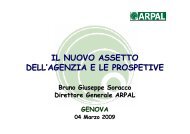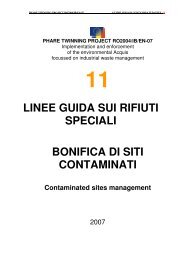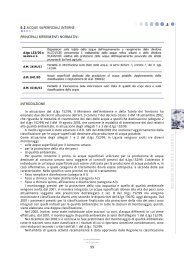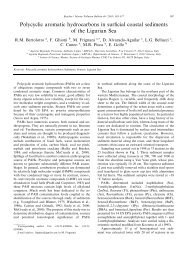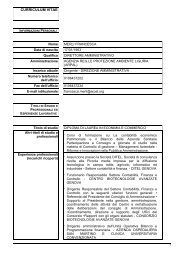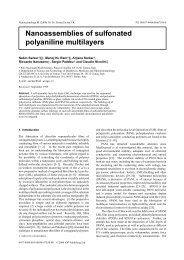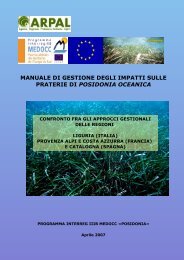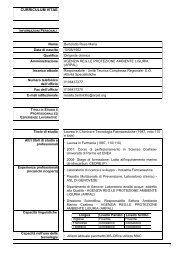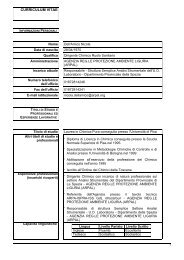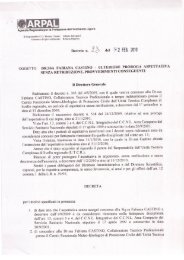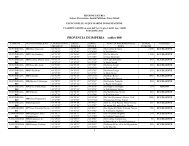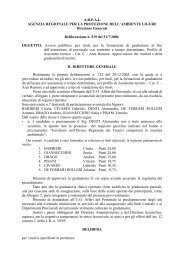Rifiuti da centrali termoelettriche - ARPAL
Rifiuti da centrali termoelettriche - ARPAL
Rifiuti da centrali termoelettriche - ARPAL
Create successful ePaper yourself
Turn your PDF publications into a flip-book with our unique Google optimized e-Paper software.
PHARE TWINNING PROJECT RO2004/IB/EN-07 GUIDELINES ON INDUSTRIAL - THERMOELECTRIC PLANTS XX<br />
The amount of CCPs produced in the EU-15 power plants totals 55 million tonnes. The follow Figure shows<br />
the shares of the different CCPs produced in 1999. Almost 70 % of the total CCPs are yielded as fly ash.<br />
All combustion residues add up to 85.1 % and FGD residues up to 13.9 % by mass.<br />
Most of the CCPs produced were used in the building industry, in civil engineering, and as construction<br />
materials in underground mining (55.3 %) or for the restoration of open cast mines, quarries and pits (33.2<br />
%). In 1999, only 2.2 % were temporarily stockpiled for future use and 9.3 % were disposed of (Figure<br />
4.47).<br />
CCP utilisation varies between Member States, since climate, taxes and the legal situations also vary. In<br />
some EU-15 countries the utilisation rate for CCPs is nearly 100 %, whereas in other countries the<br />
utilisation rate will not exceed 10 % due to existing unfavourable conditions, such as heavy metal content,<br />
loss of ignition, free and total Ca content, Cl, etc.<br />
The utilisation of desulphurisation products also varies within the EU. In some countries, spray dry<br />
absorption (SDA) products are utilised in the construction industry and as fertiliser, in other countries it is<br />
disposed of. The FGD gypsum is utilised for the production of plasterboards and self-levelling floor<br />
84



